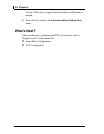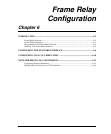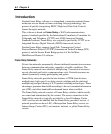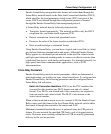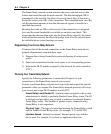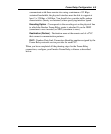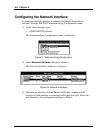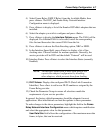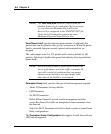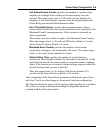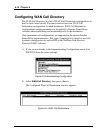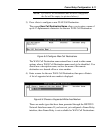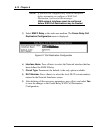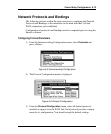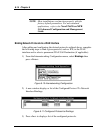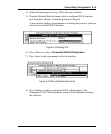
6-8 Chapter 6
NOTE: The User Data Size should be smaller than the
absolute frame size accommodated by the network,
i.e., less than the Maximum Physical Packet
Receive Size configured in the STARTUP.NCF file.
Verify that all destinations support the same
Maximum Physical Packet Receive Size.
Send Queue Limit specifies the maximum number of outbound data
packets that can be queued to this port for transmission. When the queue
limit is exceeded, the most recently queued outbound packets are
dropped.
The value ranges from 0 to 512 packets with a factory default of 100
packets. Selecting 0 disables the queue limit thereby allowing unlimited
queue depth.
NOTE: When utilizing unlimited queue depth, monitor the
server performance and total traffic constantly. Be
especially careful of conditions that can impact
memory usage and adversely affect buffer table
allocation in the NetWare environment.
Parameter Group field specifies the type of link management required.
− Annex D Parameters (factory default)
− LMI Parameters
− No DLCI Parameters
Both LMI and Annex D provide similar management facilities
except that Annex D enables an unrequested status commands from
the network.
Select No DLCI Parameters for back-to-back or point-to-point Frame
Relay configurations.
The
Parameter Group Configuration field applies to both Annex D and
LMI link management.



